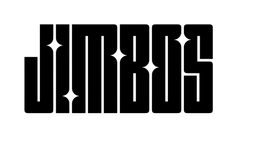Does My Car Need to Be Clayed? 5 Signs You Shouldn’t Ignore
If your paint feels rough even after washing, or you’re not getting that deep, glassy shine, chances are your car needs to be clayed. Clay bar treatment removes embedded contaminants that regular washing can’t touch—things like brake dust, overspray, rail dust, and industrial fallout.
Skipping this step before polishing or sealing is one of the most common detailing mistakes. Let’s break down the signs that it’s time to clay your car—and how to do it the right way.
Why Claying Matters
Your clear coat acts like your car’s skin. Even when it looks clean, invisible contaminants can sit on the surface and cause long-term damage or block products like wax or ceramic sprays from bonding properly.
Clay removes those contaminants and leaves your paint ultra-smooth and prepped for polishing or protection. Think of it like exfoliating your skin before applying moisturizer.
5 Clear Signs Your Car Needs to Be Clayed
-
Rough Paint Feel (The Baggie Test)
Put your hand in a sandwich bag and gently rub it across a clean section of your paint. If it feels gritty or bumpy, your car is contaminated and needs a clay treatment. -
Visible Tiny Black or Rust-Colored Spots
These are usually embedded brake dust or industrial fallout. They won’t come off with soap alone. -
Water Doesn’t Sheet or Bead Well
Contaminants disrupt the surface tension of your paint. If water behaves weirdly, you probably need to clay. -
Lack of Shine or Depth After Washing
Contaminated paint won’t reflect light properly, making your finish look dull. -
It’s Been Over 6–12 Months Since You Last Did It
Most daily drivers need to be clayed at least once or twice a year, depending on the environment.
What to Do If Your Car Needs Claying
Here’s the good news—you can clay your car safely in your own driveway. All you need is the right lube and a good clay media like a mitt or bar.
🧼 The Super Soaper works perfectly as a clay lubricant. Just dilute it and spray generously as you glide the mitt or bar across the paint.
Follow up with a proper sealant to protect your freshly decontaminated surface—like Tough As Shell.
Pro Tip: Always Pre-Soak First
Before claying, always pre-soak and foam the car with The Super Soaper. This loosens grime and reduces the chance of marring the paint when claying.
🧽 Ready to Try It Yourself?
Get everything you need to safely clay and protect your vehicle’s paint.
Related Posts
- What Is a Clay Bar and How Does It Work?
- Step-by-Step Clay Bar Process for Beginners
- Do You Need to Seal After Clay Bar Treatment?



